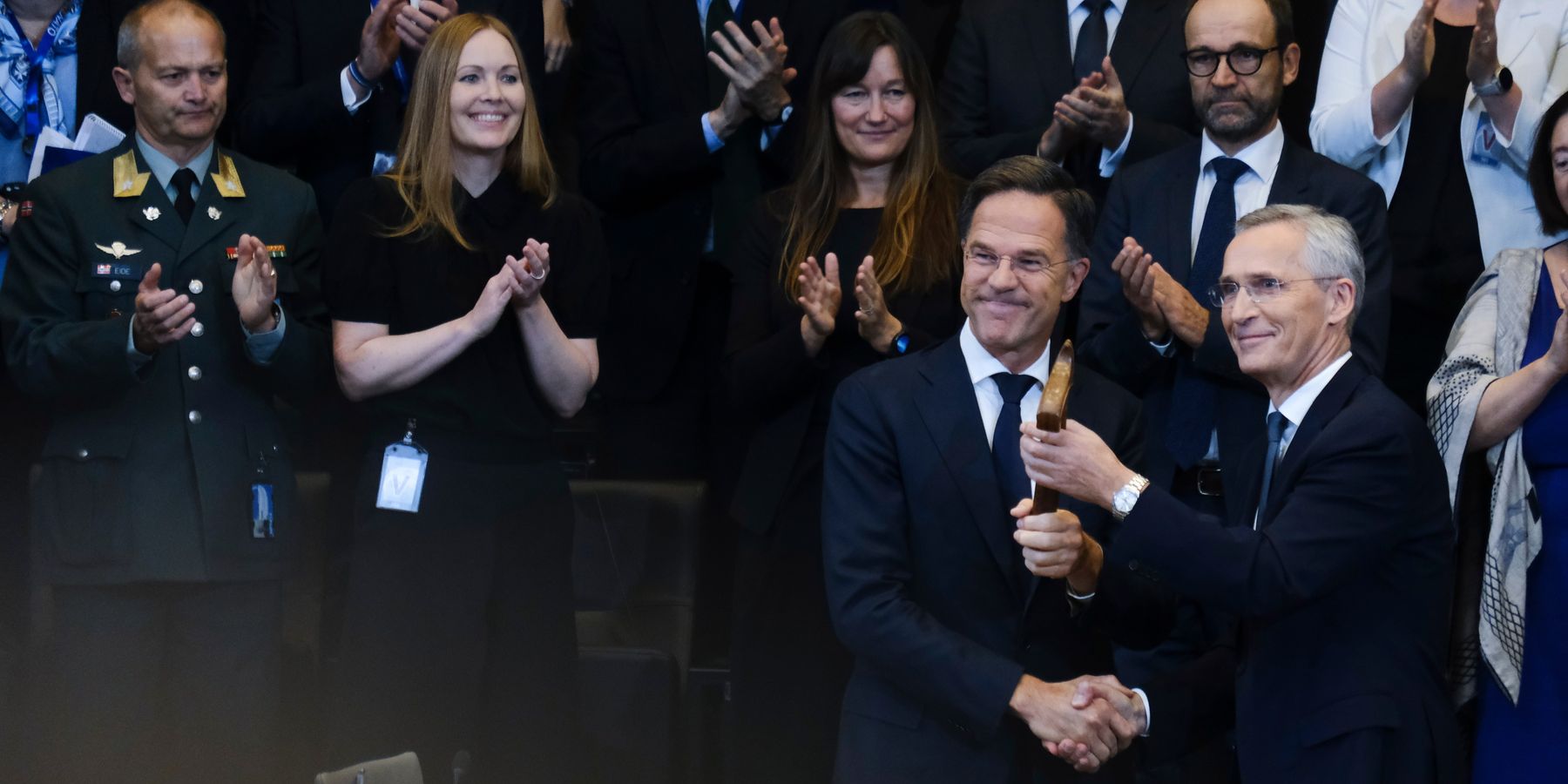Mark Rutte, the new NATO Secretary General has called for the Alliance to commit to Cold-war levels of military spending by 2030.
By doing so, he is placing in the minds of NATO citizens the idea that modern Russia offers the same level of threat as the Soviet Union. But you don’t need to look too hard at the numbers to see that this is a false and deliberately misleading comparison.
Rutte’s statement echoes a call by Donald Trump to boost NATO spending to 3%, a bandwagon the British Foreign Secretary quickly jumped aboard. The U.S. spends 3.38% of GDP on defence after all, accounting for two thirds of total NATO spending. Only three other Members — Poland, Estonia and Greece — spend above 3%, while eight Members fall short of the existing 2% target.
“During the Cold War, Europeans spent far more than three percent of their GDP on defense,” Rutte said.
However, the Cold War comparison is highly erroneous. The Soviet Union was a direct peer competitor to the United States, with its tanks and troops right on the doorstep of Western Europe. Although the Soviet economy was never comparable to America’s, it nonetheless amounted to just over half of U.S. GNP in 1984. However, the Soviets spent considerably more on defense, and a CIA report of 1982 estimated that total Soviet military expenditure had exceeded U.S. spending by a small margin by 1980.
In the 1980s the Soviet Union had a standing military of 4.3 million personnel — more than two times the size of the U.S. standing military. The Soviet population by 1990 was 288 million compared to 250 million Americans. So, across key measures, it was a comparable, if not larger, adversary.
That comparison simply doesn’t apply today. Russia is not by any economic, demographic, or conventional military measure a peer competitor either to the U.S. or to the NATO alliance writ large. The sole exception is Russia’s nuclear arsenal, which is of a frighteningly comparable size.
Russian GDP is 24.5 times smaller than the combined GDP of NATO members and 11.5 times smaller than in the U.S. Its population is seven times smaller than the combined NATO population and almost two and a half times smaller than the American population. Its much expanded total military headcount is only 45% of the size of NATO standing armies. In an attritional war with NATO, which Russia has always sought to avoid, it would not have the demographic or economic reserves to win out.
So, the Cold War comparison is deeply unhelpful and irrelevant as a frame of reference. The bigger point is that, even with defense spending at current levels, NATO is the biggest military empire the world has ever seen. According to the SIPRI database, NATO in 2023 accounted for 57% of global defense spending.
To put that into perspective, at existing levels of spending NATO spends five times more on defense than China and 10 times more than Russia. Seven times more than the whole of Asia excluding China and India, 10 times more than the Middle East, 20 times more than Latin America and 31 times more than Africa.
If NATO moved to 3% of defense spending it would be an increase of around $260 billion per year at current prices. That’s 1.8 times more than Russia plans to spend on defense in total in 2025 (around $145 billion). And, just to be clear, almost all of that money would be spent on Russia’s doorstep in Europe, as the U.S. is already above the 3% mark. The European countries of NATO already spend 3.3 times more on defense than Russia plans to in 2025.
How many times bigger than Russia does NATO have to become before it convinces itself that Russian tanks aren’t about to roll into Riga?
So where would this extravagant spending by NATO go? Rutte talked about the need to revive the “hollowed out” NATO defence industry, so rest assured, much of the money will go towards military equipment.
On average, according to NATO data, 32% of defense spending across the group goes towards equipment (for the U.S., it is 30%). So, by those figures, NATO spends roughly $472 billion each year on military equipment alone, 3.2 times more than total planned military expenditure in Russia in 2025. That doesn’t sound “hollowed out” to me. Topping 3% would add another $83.5 billion each year to that whopping figure.
Little wonder that global defense companies, of which the top five are American, are pulling in record revenues right now. The U.S. accounts for around 57% of the global defense industry by both domestic production and defense exports. So, 3% in defense spending would mean U.S. firms had a combined income that was more than twice total Russian military spending.
Ah yes, but Europe needs to spend more in case America decides one day to leave the alliance. But it is not going to pull out of NATO any time soon. If Donald Trump likes one thing, it’s to turn a profit, and the NATO alliance is a massive gravy train for U.S. contractors.
From the Russian side, they see only an enormous and — to them — threatening military alliance seeking to grow larger still. If you like, NATO is to Russia what the Soviet Union was to Western Europe forty years ago. Russia is absolutely not waging a costly war in Ukraine because it wants to invade NATO next; it is doing so to prevent NATO moving any closer to its border.
- NATO will live forever, until it doesn’t ›
- What’s holding back German rearmament? It turns out, a lot ›
- European militarism on steroids is not good, either | Responsible Statecraft ›
















